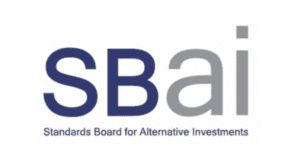Q1 large losses rise on Japan quake, but no cat bond defaults expected

Yesterday’s significant earthquake in Japan is likely to increase an already relatively heavy first-quarter of catastrophe and other large losses for the global insurance and reinsurance industry, according to analysts at Bank of America, while Plenum Investments said no impact to the catastrophe bond market is expected.
As we reported yesterday, the magnitude 7.3 earthquake struck off the eastern coast of Japan near the Fukushima prefecture, with authorities raising a tsunami advisory for possible waves of up to 1 metre and buildings swayed in the capital Tokyo.
The quake struck at around 11.30pm local time in Japan, meaning damage was not immediately visible due to occurring during the hours of darkness.
This morning, news reports suggest a moderate level of impact, with property damage being reported across a wide area of the Japanese eastern region, while reports also suggest over one hundred people injured, a number of deaths and events such as a bullet train being derailed.
While this is not expected to be a particularly large insurance and reinsurance market loss, there is a chance it causes a similar financial impact to the magnitude 7.0 earthquake that struck off the coast of the Fukushima region of Japan on February 13th 2021, which is estimated to have caused a US $1.75 billion to $2 billion industry loss.
Bank of America Securities analysts warned that yesterday’s earthquake in Japan is adding to an already relatively costly first-quarter of 2022 for the global insurance and reinsurance marketplace.
While it’s still too early to understand the potential for losses from yesterday’s quake, the analysts point out that global reinsurance players like Swiss Re may be most exposed, according to PML disclosures.
As we explained yesterday, there is plenty of insurance-linked securities (ILS) exposure to Japanese earthquake risks.
In particular, Japanese earthquake risk is a peril in the catastrophe bond market and at this time roughly $2.5 billion of cat bond risk capital outstanding has some exposure to Japanese quake loss events.
But, given the early reports of damage seen this morning, it appears this quake won’t have been significant enough to trouble the catastrophe bond market, with any ILS market impacts more likely through collateralised reinsurance.
Plenum Investments, the Zurich-headquartered cat bond and insurance investment manager, said that no cat bond defaults are expected after this quake event.
“We expect that the damage will be comparatively moderate and to remain below the required magnitudes that will trigger to CAT bond payouts. Consequently, we do not expect any impact on the valuation of the Japan earthquake positions held in our funds, which have only a small portfolio share of 1% to 5% depending on the fund,” the investment manager said.
There is a chance of some exposure for parametric earthquake structures, particularly if measured against the Japanese shindo scale for shaking, as yesterday’s quake did cause some severe ground-movements.
This quake caused a particularly long period of shaking and there were widespread reports of people being unable to stand during it.
At this stage it’s not possible to know if any parametric insurance contracts may be triggered though.
The analysts explained that the earthquake threatens “potential further short-term headwinds for the reinsurers and London market insurers.”
Explaining that, “There is an increasing risk large losses will be above budget in Q1 following the European storms, Australian floods, man-made losses related to the Russia/Ukraine war and now possibly further losses from a Japanese earthquake.”
As we’ve been reporting, the Australian flood insurance market loss is now estimated as above AU $2 billion, while insurance and reinsurance market exposure to the Ukraine invasion are clearly rising, but extremely challenging to quantify at this stage.
Add in winter European windstorm damages, which are clearly into the mid-single-digit billions of dollars, as well as US winter storm insured losses, plus severe weather events around the world, and it’s clear the first-quarter of 2022 will be relatively meaningful, in terms of overall large loss impact to the global insurance and reinsurance community.
At this stage, the insurance-linked securities (ILS) market will not be expecting too significant a hit from Q1, given the natural catastrophe loss burden is still not too high and any impacts would come via collateralised reinsurance and quota shares, as well as the Australian floods.
But some ILS market impact is assured, given the expansive reach of ILS capital into global reinsurance towers these days.
On Ukraine, ILS market exposure is very limited and largely only within any specialty lines focused quota shares, sidecars and structures, as we reported recently on Hannover Re’s sidecar here.






